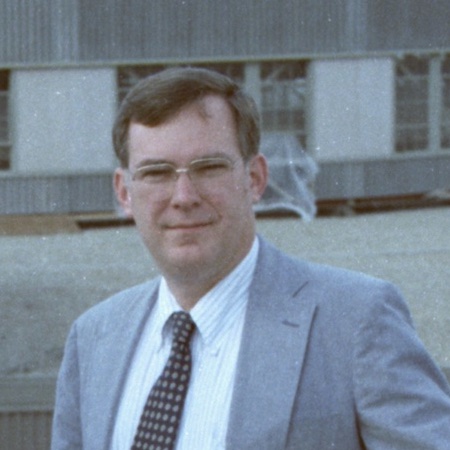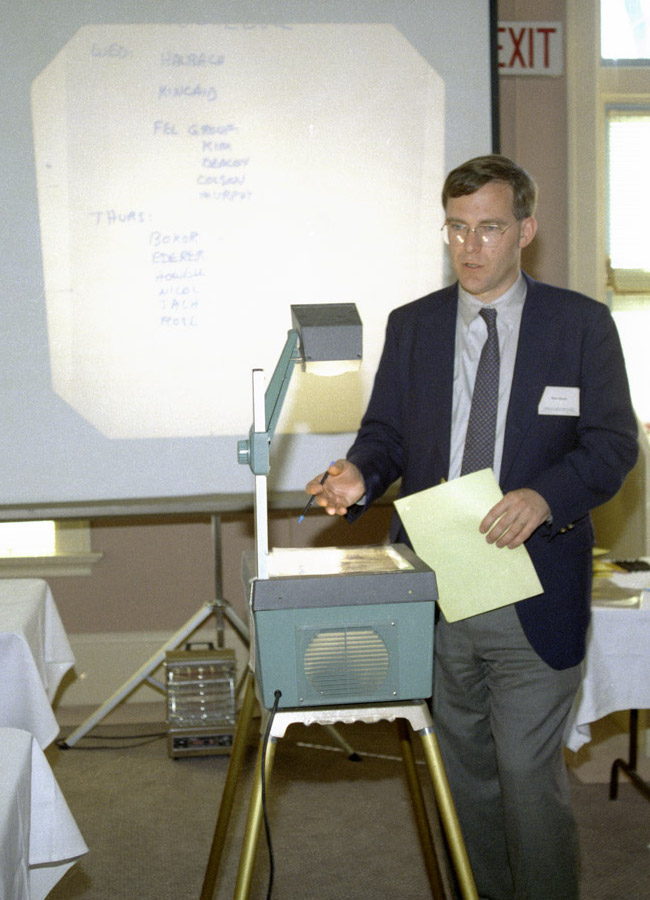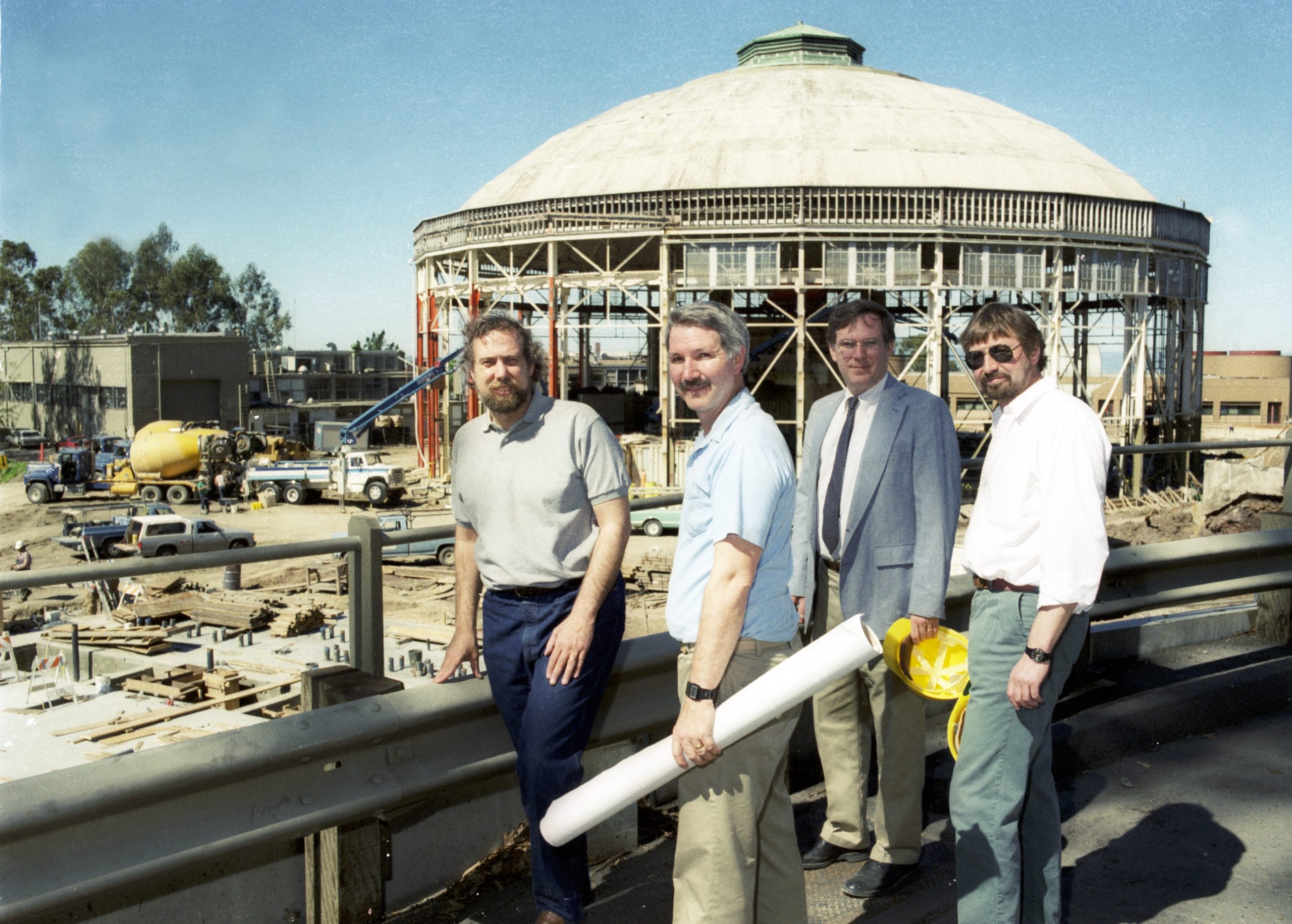
Brian Kincaid, the first director of the Advanced Light Source, died on January 1, 2022. The ALS community sends our condolences to his family and honors the many contributions he made to the early years of our facility. A common thread underscores messages from Kincaid’s former colleagues, who all remember his liveliness and spirit.
Citing Kincaid’s brilliance and enthusiasm, former Berkeley Lab Director Chuck Shank said, “His contributions were key to the tremendous success of the light source.” Shank credited Kincaid with providing leadership in the transition from construction to an operating scientific facility—a period that can be difficult to navigate. As current ALS Director Steve Kevan said, “The first five years of every new facility is nearly always an adventure.” He added, “Brian was very much in the middle of that adventure during his time as ALS director.”
The adventure was reflected in former Deputy Division Director Ben Feinberg’s remembrances as well. Recalling how Kincaid took over from Jay Marx, who was project director during the construction of the ALS, Feinberg described how Kincaid set the pace early on—from April 1, 1993, the first official day of ALS operations. “Brian used his intellectual abilities and motivational skills to bring the construction project to a successful completion, to begin operations, and to continue building beamlines at a rapid pace to serve and expand the user community.”

The ALS was the first third-generation synchrotron radiation facility based primarily on using undulators as insertion devices, and expansion of the beamline portfolio was rooted in Kincaid’s deep understanding of undulator physics. “If I had any questions related to understanding the characteristics of undulators, my first choice was to go to Brian,” said former ALS Deputy Zahid Hussain. “He would get excited, giving a highly comprehensive explanation,” Hussain recalled. Kincaid’s knowledge of the field set a direction for work at the ALS. “Brian directed the completion of high-brightness soft x-ray beamlines,” said Hussain, “which enabled the ALS to demonstrate the high value of light sources for soft x-ray research.”
Kincaid’s vision of the ALS extended beyond soft x-rays, and he encouraged the wavelength extension to include both infrared and hard x-rays. Photon Sciences Development Deputy Alastair MacDowell noted the director’s support of the superbend concept, which was implemented after Kincaid retired and resulted in nine productive hard x-ray beamlines.
In the heady days of starting a new synchrotron facility, Kincaid led the ALS with vision and enthusiasm. “He was a maverick and liked competition,” MacDowell said. These qualities are as much a part of Kincaid’s legacy as the scientific program he led, and Feinberg also paid tribute to his personality as he remembered his colleague. “I enjoyed working with Brian over the first five years on ALS operations, and will miss his sharp wit and willingness to speak his mind at all times.”
This obituary is based on contributions from Ben Feinberg, Zahid Hussain, Steve Kevan, Alastair MacDowell, and Chuck Shank.
